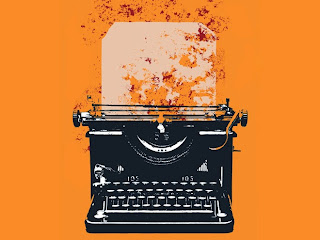What's Up With That: Why It's So Hard to Catch Your Own Typos
- By Nick Stockton
- 08.12.14 |
- 11:21 am |
- Permalink
You have finally finished writing your article. You've sweat over your choice of words and agonized about the best way to arrange them to effectively get your point across. You comb for errors, and by the time you publish you are absolutely certain that not a single typo survived. But, the first thing your readers notice isn't your carefully crafted message, it's the misspelled word in the fourth sentence.
The reason typos get through isn't because we're stupid or careless, it's because what we're doing is actually very smart, explains psychologist Tom Stafford, who studies typos of the University of Sheffield in the UK. "When you're writing, you're trying to convey meaning. It's a very high level task," he said.
As with all high level tasks, your brain generalizes simple, component parts (like turning letters into words and words into sentences) so it can focus on more complex tasks (like combining sentences into complex ideas). "We don't catch every detail, we're not like computers or NSA databases," said Stafford. "Rather, we take in sensory information and combine it with what we expect, and we extract meaning." When we're reading other peoples' work, this helps us arrive at meaning faster by using less brain power. When we're proof reading our own work, we know the meaning we want to convey. Because we expect that meaning to be there, it's easier for us to miss when parts (or all) of it are absent. The reason we don't see our own typos is because what we see on the screen is competing with the version that exists in our heads.
This can be something as trivial as transposing the letters in "the" to "hte," or something as significant as omitting the core explanation of your article. In fact, I made both of these mistakes when I wrote this story. The first was a misspelling in a sentence that my editor had to read aloud for me before I saw it for myself. The second mistake was leaving out the entire preceding paragraph that explains why we miss our own typos.
Generalization is the hallmark of all higher-level brain functions. It's similar to how our brains build maps of familiar places, compiling the sights, smells, and feel of a route. That mental map frees your brain up to think about other things. Sometimes this works against you, like when you accidentally drive to work on your way to a barbecue, because the route to your friend's house includes a section of your daily commute. We can become blind to details because our brain is operating on instinct. By the time you proof read your own work, your brain already knows the destination.
This explains why your readers are more likely to pick up on your errors. Even if you are using words and concepts that they are also familiar with, their brains are on this journey for the first time, so they are paying more attention to the details along the way and not anticipating the final destination.
But even if familiarization handicaps your ability to pick out mistakes in the long run, we're actually pretty awesome at catching ourselves in the act. (According to Microsoft, backspace is the third-most used button on the keyboard.) In fact, touch typists—people who can type without looking at their fingers—know they've made a mistake even before it shows up on the screen. Their brain is so used to turning thoughts into letters that it alerts them when they make even minor mistakes, like hitting the wrong key or transposing two characters. In a study published earlier this year, Stafford and a colleague covered both the screen and keyboard of typists and monitored their word rate. These "blind" typists slowed down their word rate just before they made a mistake.
Touch typists are working off a subconscious map of the keyboard. As they type, their brains are instinctually preparing for their next move. "But, there's a lag between the signal to hit the key and the actual hitting of the key," Stafford said. In that split second, your brain has time to run the signal it sent your finger through a simulation telling it what the correct response will feel like. When it senses an error, it sends a signal to the fingers, slowing them down so they have more time to adjust.
As any typist knows, hitting keys happens too fast to divert a finger when it's in the process of making a mistake. But, Stafford says this evolved from the same mental mechanism that helped our ancestors' brains make micro adjustments when they were throwing spears.
Unfortunately, that kind of instinctual feedback doesn't exist in the editing process. When you're proof reading, you are trying to trick your brain into pretending that it's reading the thing for the first time. Stafford suggests that if you want to catch your own errors, you should try to make your work as unfamiliar as possible. Change the font or background color, or print it out and edit by hand. "Once you've learned something in a particular way, it's hard to see the details without changing the visual form," he said.
| Evernote helps you remember everything and get organized effortlessly. Download Evernote. |






No comments:
Post a Comment